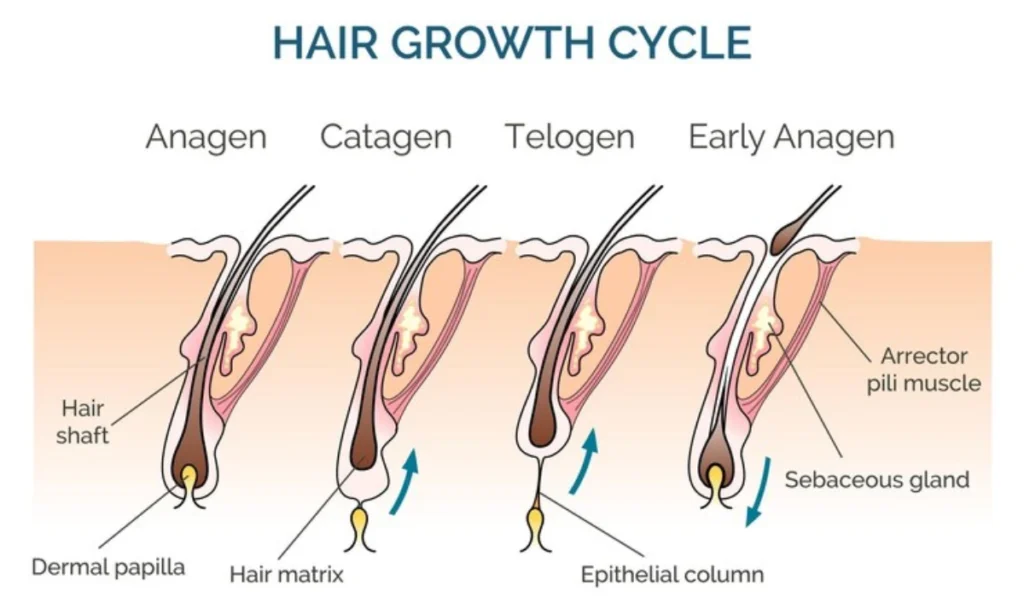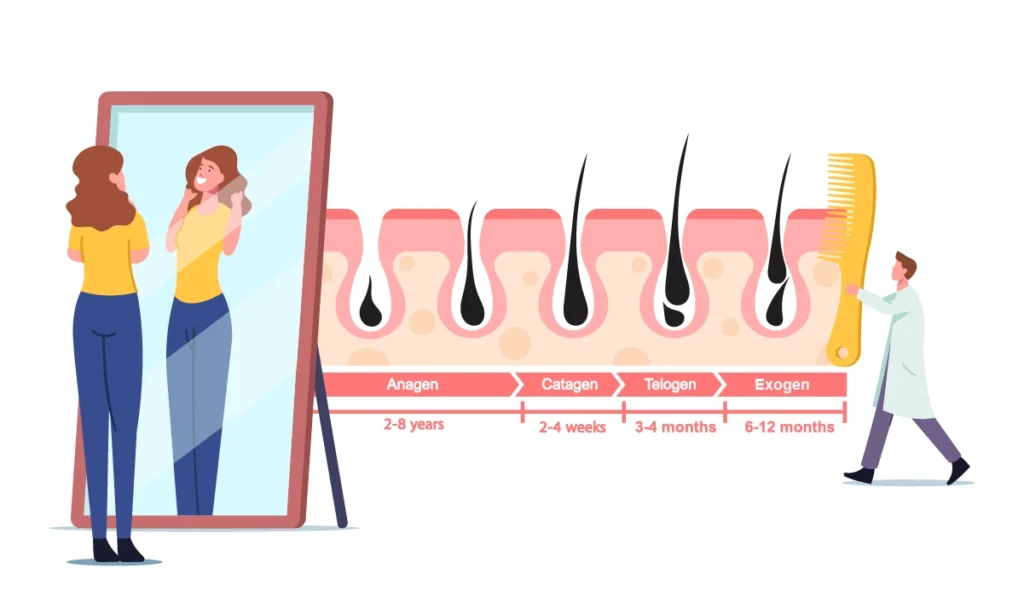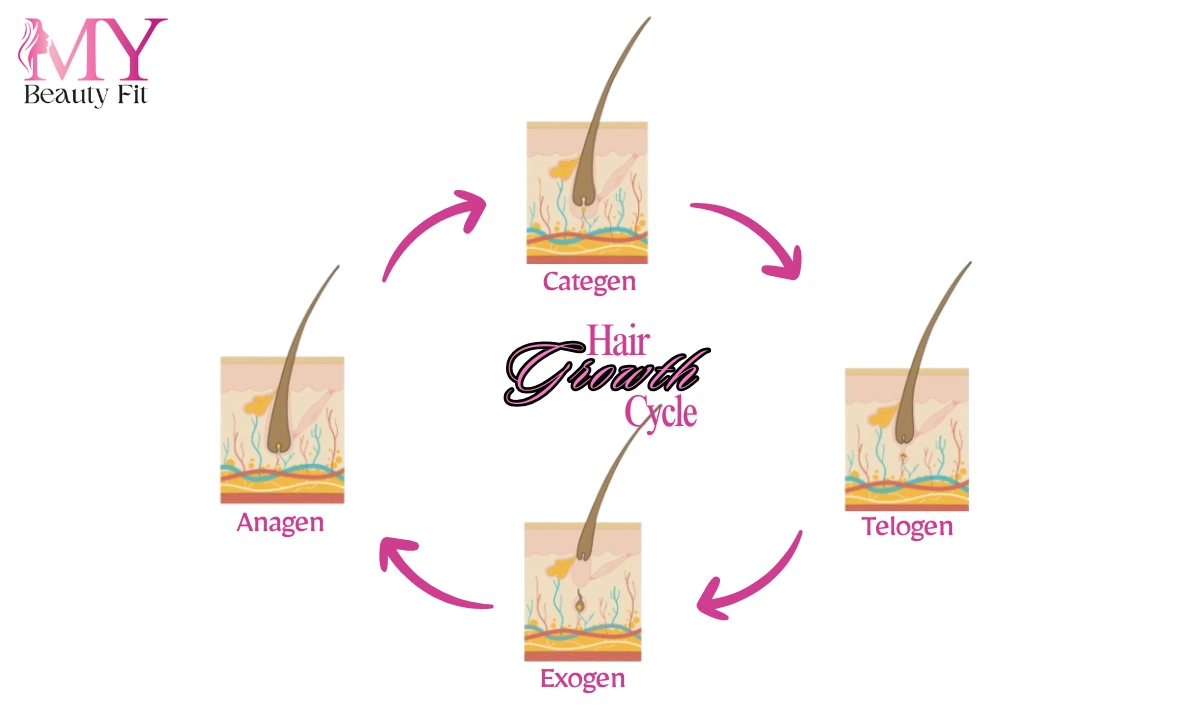How Many Hair Growth Cycles Are There? The science simplified to explain the phases of growth and how they impact your body and health. Learn more now!
Introduction:
The hair growth cycle is a multistage process that includes several stages that differ by the time they last and the specific characteristics of hair at each stage. Knowing these phases is important for identifying how the hair develops and which signs prompt undesirable changes. In the present article, we discuss the three major stages of hair growth and their relevance, as well as the contributory factors to hair health.
Each hair follicle passes through one or more cycles in an individual’s life span, which can take between ten to thirty cycles. Each cycle consists of four main phases: acinar, follicular, sebaceous, and external root. These phases are not all the same for all hair follicles, but they progress so that hair appears on the scalp for continuous growth even when small hairs of other people are in another phase.
How many hair growth cycles are there?
There are various growth cycles that help hair to grow step by step:
Anagen Phase or Growth Phase
About 1 to 1.5 cm of hair grows on average each month, depending on a number of variables such as age, genetic makeup, and individual health. The hair growth cycle’s anagen phase, which lasts two to eight years, is the longest and most active phase. During this phase, cells are continuously being created to give the hair strand additional length, and it only happens with hair follicles that have not shed their previous hair strand. Since the anagen phase establishes the actual length at which hair can progress to the following phase, it is the most significant stage of hair growth.

For instance, every person with longer anagen phases can grow longer hair. Other conditions, in this phase, may also help define this phase including hormonal balance A man has a higher hormonal balance as opposed to a woman hence he is likely to grow hair faster.
Catagen or Transition Phase
The next phase is the catagen phase and is a transition phase that only lasts for about 2-4 weeks. S proclamation can proliferate its hair during this time, but growth slows dramatically, the hair follicle starts to atrophy and the hair strand separates from its blood supply. This process results in what is called club hair, which is a hair shaft that is well to grow but still firmly embedded in the follicle.
As much as we’ve described the catagen phase as a brief phase, it’s a very important phase in the hair cycle since it sets the hair follicles for the next phase. This phase even though it is compared to the anagen phase, is crucial for the development of the possibility of transition of hair follicles to the rest phase.
Telogen Phase or Resting Phase
Telogen the next stage of the hair growth cycle follows the catagen phase and includes a resting phase, which can take 3 to 4 months. In this phase, the hair follicle becomes nonfunctional and does not grow any new hair. Dihydrotestosterone concentration varies with other hormones, affecting about 10 to 15 % of scalp hairs in the telogen phase at any one time.
This stage enables the shedding of older hairs while at the same time, new hairs start preparing to grow within the follicle. The end of the telogen phase reaches the point where the bulk of the faded hair is shed with new hair rendering its appearance in the follicles. This natural cycle of shedding is important to keep healthy hair on the head.
Exogen Phase or Shedding Phase
The last phase of the hair development process is called the exogen phase of the hair growth cycle when the hair strands are shed from the human scalp. This phase takes 6 to 12 months and is associated with the telogen and anagen phases because new hairs start growing as older ones fall off.

In this phase, people shed 100 to 150 hair per day and do not develop baldness because hair loss is not grouped but is present in various stages in different follicles. This exogen phase is important in preserving the hair density and at the same time providing room for new hair to grow.
- How to Cancel My Planet Fitness Membership in 2025
- How many calories should I eat to lose weight?
- How many mental health professionals are in the US?
- Skin Care During Winter: 7 Essential Tips to Keep Your Skin Healthy
- How did Elon Musk lose weight so fast? 5 Secrets – You Won’t Believe What He Did!
- How Does Weight Loss Affect Your Face? 6 Unexpected Effects
- Does Baking Soda Kill Dandruff? 5 Proven Methods Explained
- Which Yoga Is Best for Beginners? 6 Easy Poses to Start With
- Are Exercise Bikes Bad for Your Knees? Experts Reveal 3 Insights
- Are Workout Apps Worth It? 5 Unexpected Benefits Revealed
- Can You Repair Hair Follicles? Discover the 5 Best Treatments
- How many yoga studios in the US? Shocking Fact – 42,000+ Studios
Conclusion
In summary, human hair undergoes a continuous cycle consisting of four key phases: Anagen (growing), Catagen(transit), Telogen (resting), and exogenous (shedding). All of them are important in deciding how long, and how healthy our hair grows but also how well, and often our hair can renew itself and shed. Recognizing the nature of these cycles, together with any problems associated with cyclic hair growth or the reverse, is important when it comes to hair care.

